The Sansevieria laurentii, also referred to as the snake plant or mother-in-law’s tongue, is a highly sought-after houseplant that originates from West Africa. Its striking appearance is characterized by long, upright leaves that are dark green in color and adorned with a yellow edge. This plant is known for its hardiness and ease of care, making it an ideal choice for both novice and experienced gardeners alike.
In this article, we will delve into the various aspects of Sansevieria laurentii plant care, including watering, lighting, and soil requirements, to ensure that your snake plant remains healthy and thriving. With its unique and captivating appearance, the Sansevieria laurentii is a must-have addition to any indoor garden. So, let’s get started on exploring the intricacies of caring for this magnificent plant!
Lighting Requirements for the Sansevieria laurentii
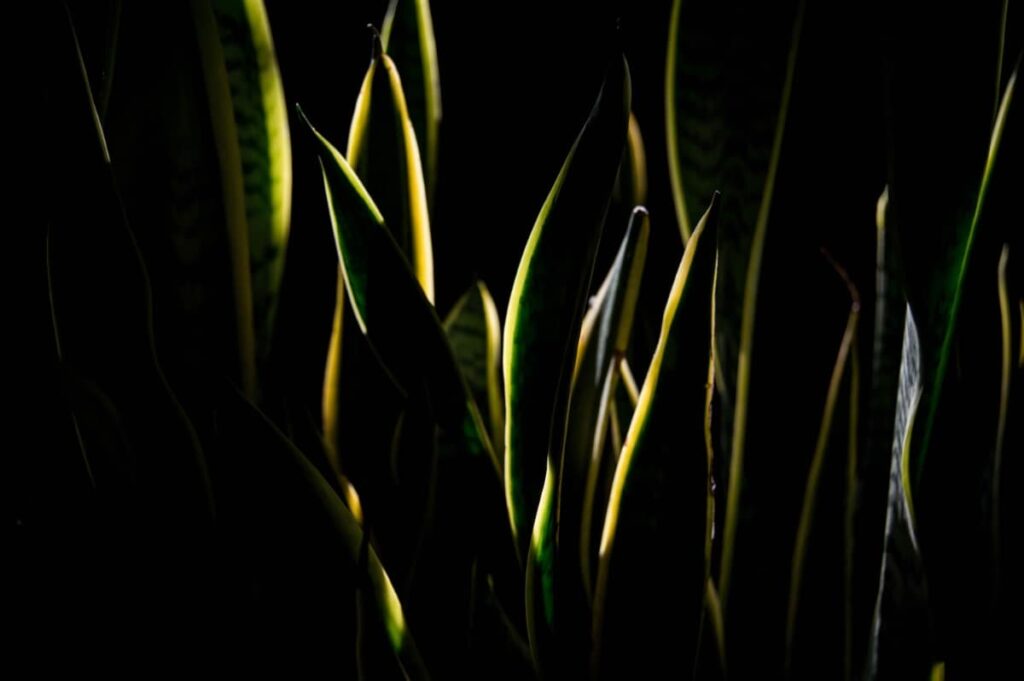
Sansevieria Laurentii, also known as the snake plant, is a popular indoor plant that is easy to care for. However, one of the most important factors in keeping this plant healthy is providing it with the right amount of light. But what exactly is the best kind of sunlight for this plant? Well, Sansevieria Laurentii thrives in bright, indirect sunlight. So, what’s the ideal amount of light for this plant? Sansevieria Laurentii requires at least 6 hours of light per day to grow well. However, it can also survive with as little as 2-3 hours of light per day. But what about the windows? East or west-facing windows are the best for Sansevieria Laurentii plant care. These windows provide bright, indirect sunlight for several hours a day, which is ideal for the plant’s growth.
But what if you don’t have an east or west-facing window? Well, north-facing windows can also work, but the plant may not grow as quickly or produce as many leaves. And what happens if the plant gets too much or too little light? If Sansevieria Laurentii gets too much light, the leaves may become yellow or brown and develop dry, crispy edges. On the other hand, if the plant doesn’t get enough light, the leaves may become pale and droopy, and the plant may stop growing altogether. Therefore, it’s important to find the right balance of light for the plant to thrive. Sansevieria Laurentii requires bright, indirect sunlight for at least 6 hours a day to grow well, but it can also tolerate low light conditions.
East or west-facing windows are the best for the plant’s growth, while direct sunlight should be avoided. Too much or too little light can have negative effects on the plant’s health, so it’s important to find the right balance.
Watering Requirements for the Sansevieria laurentii
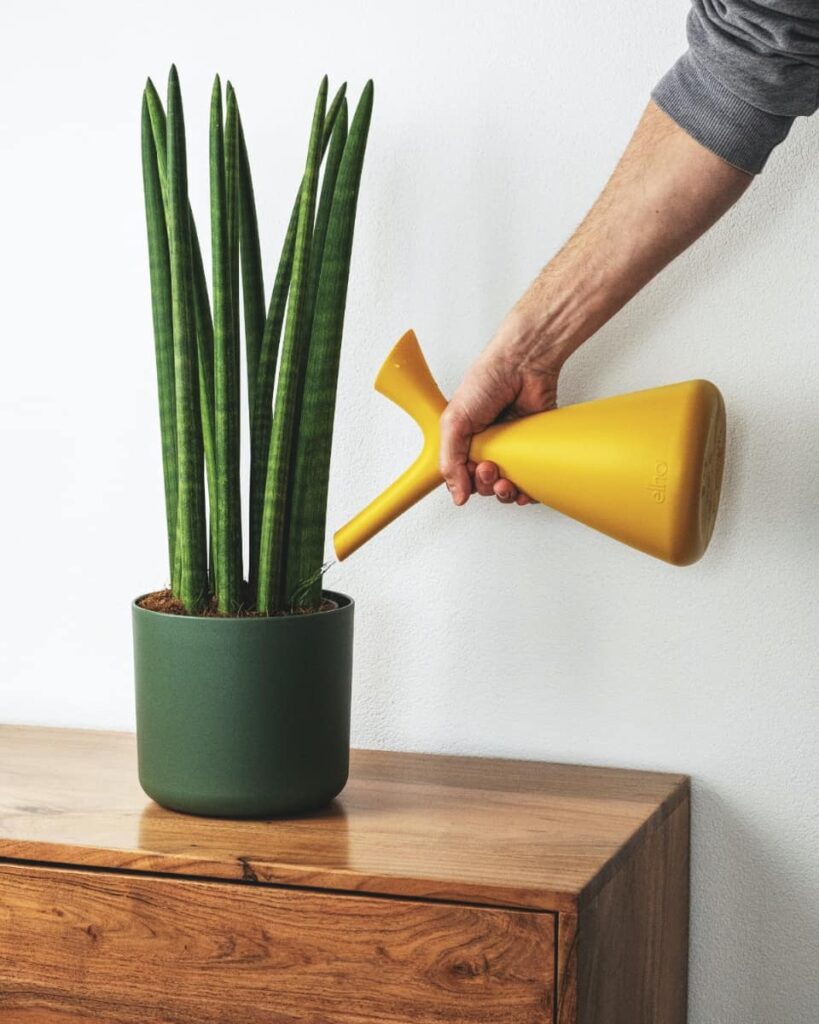
The Sansevieria Laurentii, also known as the snake plant, is a popular houseplant that is easy to care for. However, one of the most crucial aspects of Sansevieria Laurentii plant care is watering. So, how much water does this plant need? Well, Sansevieria Laurentii is a drought-tolerant plant that doesn’t require frequent watering. Overwatering can lead to root rot, which can ultimately lead to the death of the plant. Therefore, it’s important to be careful not to overwater this plant. The amount of water the plant needs depends on various factors such as the size of the pot, the humidity level, and the temperature.
But what happens if the Sansevieria Laurentii plant is overwatered or underwatered? Overwatering can cause the plant’s roots to rot, which can lead to the death of the plant. Signs of overwatering include yellowing leaves, mushy stems, and a foul odor. On the other hand, underwatering can cause the leaves to become dry and brittle, and the plant may stop growing. The leaves may also curl up or turn brown.
So, what is the ideal watering schedule for the Sansevieria Laurentii plant? The ideal watering schedule for Sansevieria Laurentii is to water the plant thoroughly but infrequently. Allow the soil to dry out completely between waterings. The frequency of watering depends on the environment in which the plant is growing. In general, during the growing season (spring and summer), water the plant once a week. During the dormant season (fall and winter), reduce watering to once every two to three weeks.
Watering is an essential aspect of Sansevieria Laurentii plant care. Overwatering or underwatering can harm the plant, so it’s important to water the plant correctly. By following the ideal watering schedule and allowing the soil to dry out between waterings, you can keep your Sansevieria Laurentii healthy and thriving.
Temperature Requirements for the Sansevieria laurentii
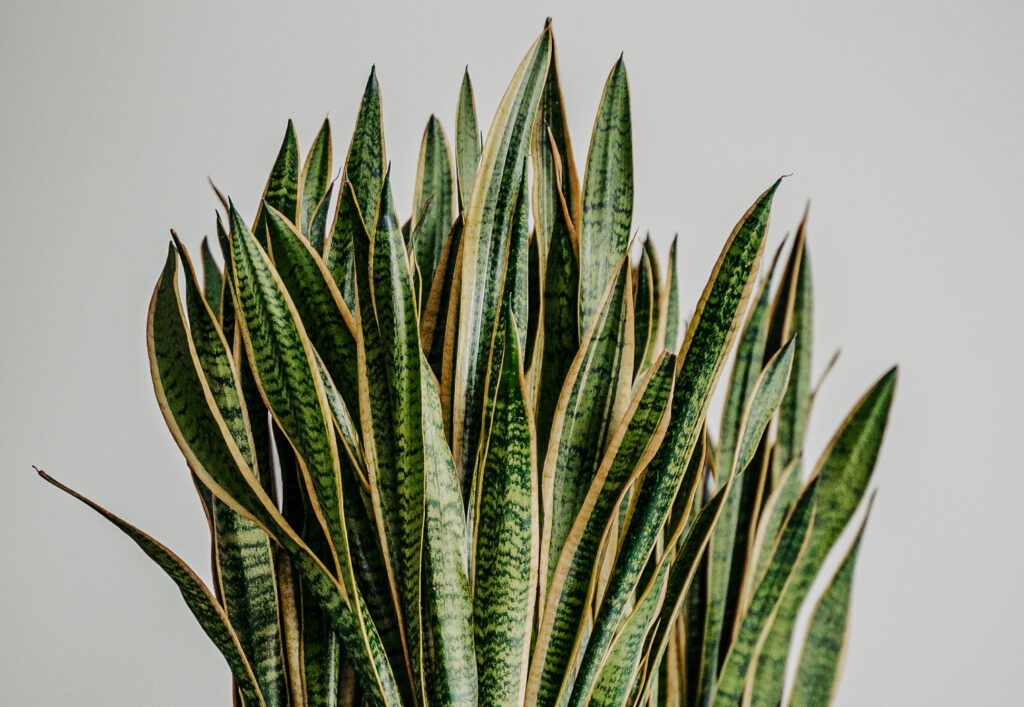
Sansevieria Laurentii, also known as the snake plant, is a popular indoor plant that is easy to care for. But, one of the most important factors to consider when caring for this plant is the temperature. Sansevieria Laurentii is a tropical plant that thrives in warm temperatures, but it can also tolerate cooler temperatures. So, what is the ideal temperature range for this plant to grow in?
Well, the ideal temperature range for Sansevieria Laurentii is between 60°F to 85°F (15°C to 29°C). However, this plant can tolerate temperatures as low as 50°F (10°C) and as high as 95°F (35°C) for short periods of time. But, it is important to note that the plant will not grow well in extreme temperatures.
What happens if the temperature is too hot or too cold for this plant? If the Sansevieria Laurentii plant is kept in conditions that are too hot, it can cause the leaves to become dry and brittle. This can lead to the plant becoming dormant and even the leaves turning yellow and dying. On the other hand, if the plant is kept in conditions that are too cold, it can cause the leaves to become soft and mushy. This can also lead to the plant becoming dormant and even the leaves turning brown and dying.
Therefore, it is crucial to maintain the ideal temperature range for Sansevieria Laurentii plant care. This will ensure that the plant grows healthy and thrives in its environment. If the plant is kept in conditions that are too hot or too cold, it can cause damage to the plant and affect its growth. So, keep an eye on the temperature and make sure it stays within the ideal range for this beautiful plant to flourish.
Humidity Requirements for the Sansevieria laurentii
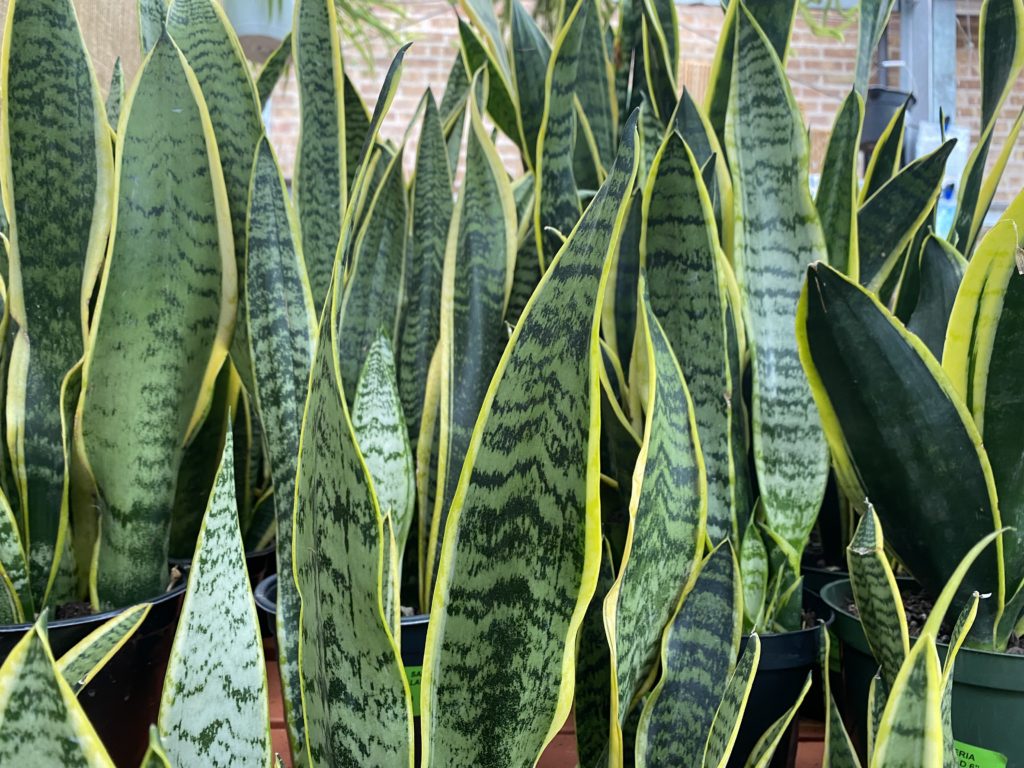
Sansevieria Laurentii, also known as the snake plant, is a plant that is quite adaptable and can thrive in a variety of conditions. When it comes to humidity, this plant is no exception. The ideal humidity range for Sansevieria Laurentii is between 40% to 60%, which is considered to be comfortable for most indoor plants. However, this plant can also tolerate humidity levels as low as 30% and as high as 70%.
If the Sansevieria Laurentii plant is kept in conditions that are too dry, it can lead to several problems. The leaves may become dry and brittle, and the tips may turn brown. The plant may also become more susceptible to pests and diseases. To prevent these issues, it is important to keep the plant in a location with moderate humidity levels.
On the other hand, if the air around the plant is too humid, it can lead to root rot and other fungal diseases. The leaves may also become soft and mushy, and the plant may start to droop. Therefore, it is important to avoid keeping the plant in excessively humid conditions.
To ensure that your snake plant stays healthy and vibrant for years to come, it is crucial to provide the right amount of humidity. You can use a humidifier or place a tray of water near the plant to increase the humidity if the air in your home is too dry. However, make sure the plant is not placed in a location with high humidity levels, such as a bathroom or kitchen, to prevent any issues.
Sansevieria Laurentii is a versatile plant that can tolerate a range of humidity levels. By keeping the plant in a location with moderate humidity levels, you can prevent any issues and ensure that your snake plant stays healthy and vibrant.
Soil Requirements
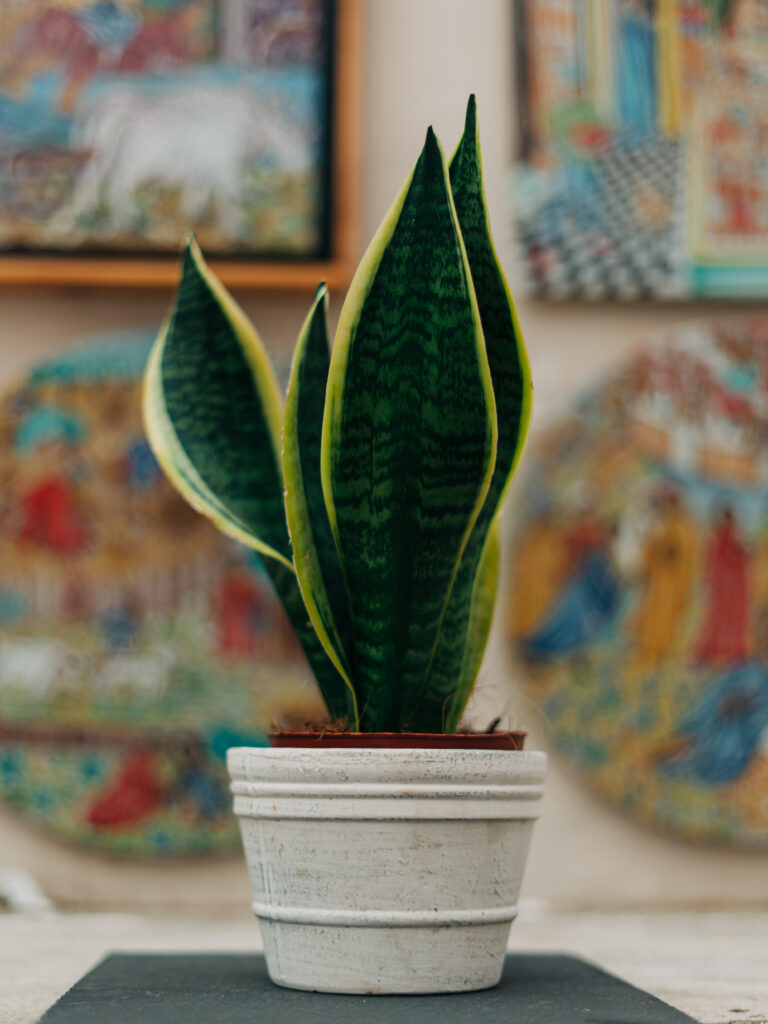
The Sansevieria Laurentii, also known as the snake plant, is a plant that can thrive in a variety of soil types. However, it is important to ensure that the soil is well-draining and does not retain too much moisture, as the plant is susceptible to root rot if the soil is too wet.
To create a good soil mix for Sansevieria Laurentii, a combination of potting soil, perlite, and sand is recommended. This will provide the plant with the necessary nutrients and drainage it needs to grow healthy and strong.
When planting Sansevieria Laurentii, it is important to choose a pot with drainage holes to allow excess water to escape. Fill the pot with the soil mix and plant the snake plant at the same depth it was in its previous container.
It is important to note that Sansevieria Laurentii can tolerate a range of soil pH levels, but prefers a slightly acidic to neutral soil with a pH between 6.0 and 7.5. Regularly check the soil moisture level and water only when the top inch of soil is dry to the touch.
Overall, providing well-draining soil and proper watering practices are key to ensuring the health and longevity of your Sansevieria Laurentii plant.
Fertilizer and Nutrient Requirements
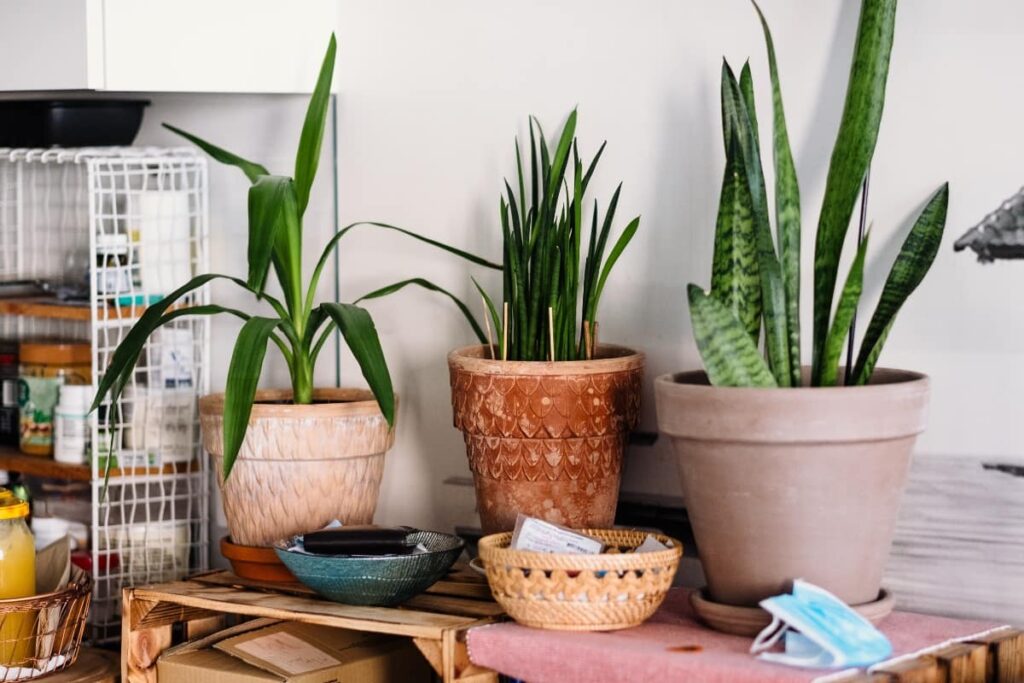
Sansevieria laurentii, a plant that is low-maintenance, does not require frequent fertilization. However, providing it with the right nutrients can help it grow healthier and more vibrant. During the growing season, which is from spring to summer, you can fertilize your Sansevieria laurentii once a month. Use a balanced liquid fertilizer that is diluted to half strength. Avoid over-fertilizing as it can lead to root burn and damage the plant.
During the dormant season, which is from fall to winter, reduce the frequency of fertilization to once every two to three months. You can also use a slow-release fertilizer that will provide nutrients to the plant over a longer period.
Sansevieria laurentii prefers well-draining soil that is rich in organic matter. You can add compost or aged manure to the soil to improve its nutrient content. Additionally, you can use a liquid seaweed fertilizer to provide your plant with trace minerals and micronutrients.
It is important to note that Sansevieria laurentii is sensitive to fluoride and boron, which are commonly found in tap water. To avoid these issues, use distilled or rainwater for watering your plant. If you must use tap water, allow it to sit for 24 hours before using it to water your plant. This will allow the fluoride and boron to dissipate.
Overall, Sansevieria laurentii is a low-maintenance plant that does not require frequent fertilization. However, providing it with the right nutrients can help it grow healthier and more vibrant. Use a balanced liquid fertilizer during the growing season and reduce the frequency of fertilization during the dormant season. Additionally, use well-draining soil that is rich in organic matter and avoid using tap water that contains fluoride and boron.
Common Pests and Diseases
Sansevieria laurentii, also known as the snake plant, is a hardy and low-maintenance plant that is resistant to most pests and diseases. However, like any other plant, it can still be susceptible to certain issues. Here are some common pests and diseases that can affect Sansevieria laurentii and how to treat them:
First, we have spider mites, these tiny pests can cause yellowing and browning of the leaves, as well as webbing on the plant. To treat spider mites, wipe down the leaves with a damp cloth and spray the plant with a mixture of water and neem oil or insecticidal soap.
Second, we have mealybugs, these small, white, cotton-like insects can cause stunted growth and yellowing of the leaves. To treat mealybugs, wipe down the leaves with a cotton swab dipped in rubbing alcohol or spray the plant with a mixture of water and insecticidal soap.
Third, we have scale insects, these small, brown, oval-shaped insects can cause yellowing and wilting of the leaves. To treat scale insects, wipe down the leaves with a damp cloth and spray the plant with a mixture of water and neem oil or insecticidal soap.
Fourth, we have root rot, a fungal disease that can be caused by overwatering or poor drainage. Symptoms include yellowing and wilting of the leaves, as well as mushy and blackened roots. To treat root rot, remove the affected plant from its pot, trim away any mushy roots, and repot the plant in fresh, well-draining soil.
Lastly, we have leaf spot, a fungal disease that can cause brown or black spots on the leaves. To treat leaf spot, remove any affected leaves and avoid getting water on the leaves when watering the plant. You can also spray the plant with a fungicide.
Overall, Sansevieria laurentii is a relatively low-maintenance plant that is resistant to most pests and diseases. However, it’s important to keep an eye out for any issues and address them promptly to keep your plant healthy and thriving.
Propagating the Sansevieria laurentii
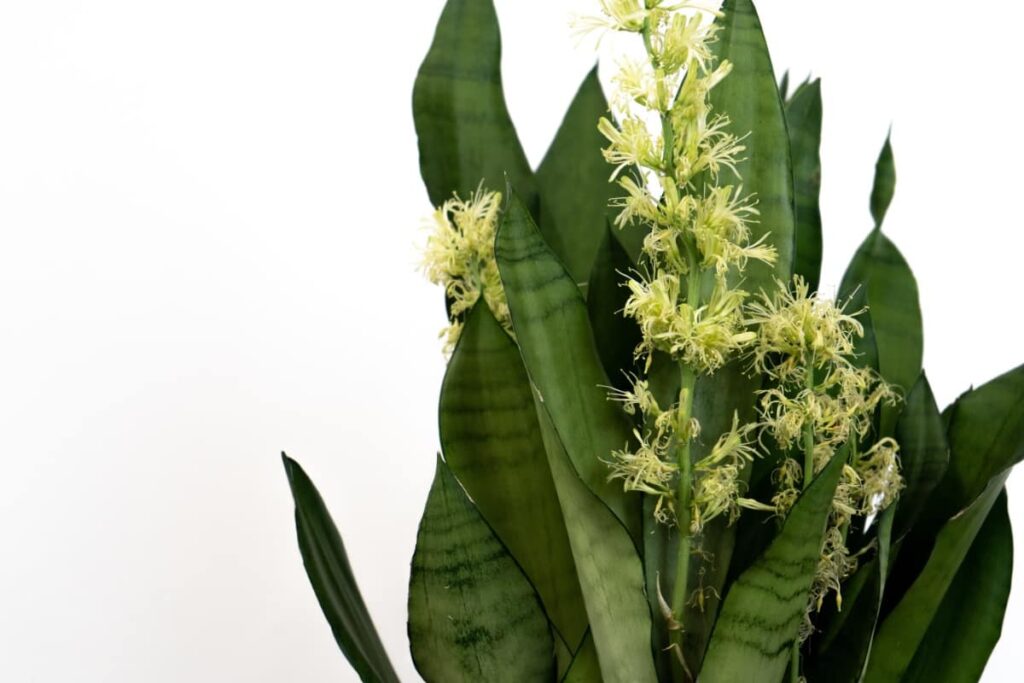
The propagation of Sansevieria laurentii is a process that can be accomplished through two methods: division or leaf cuttings. The former involves the careful removal of the plant from its pot, followed by the gentle separation of the roots into smaller sections. Each section should contain at least one healthy leaf and a portion of the root system. The newly divided sections should then be planted in fresh soil and watered thoroughly. It is important to keep the newly propagated plants in a warm, bright location and avoid direct sunlight until they have established roots.
On the other hand, the latter method involves the selection of a healthy leaf, which is then cut into several sections, each measuring about 2-3 inches in length. The cuttings should be allowed to dry for a few days before being planted in a pot with well-draining soil. The soil should be watered lightly, and the pot should be kept in a warm, bright location. The cuttings should root within a few weeks and can be transplanted into individual pots once they have established roots.
Regardless of the propagation method used, it is crucial to keep the soil moist but not waterlogged and to avoid over-fertilizing the newly propagated plants. With proper care, Sansevieria laurentii can be easily propagated and will continue to thrive for years to come.
Is the Sansevieria laurentii Harmful to Pets?
Sansevieria laurentii, also known as the snake plant or mother-in-law’s tongue, is a popular houseplant that has gained a reputation for being low maintenance and air-purifying. However, pet owners should be aware that this plant is toxic to cats, dogs, and other pets, and can cause a range of symptoms if ingested.
The plant contains saponins, which can cause gastrointestinal upset, vomiting, and diarrhea if ingested by pets. In severe cases, it can also lead to tremors, seizures, and respiratory distress. This means that it is crucial to keep Sansevieria laurentii out of your pet’s reach, and to take precautions to ensure their safety.
If you have pets in your home, it is important to consider placing the plant on a high shelf or in a room that your pets do not have access to. This will help to prevent any accidental ingestion and keep your furry friends safe.
If you suspect that your pet has ingested any part of the plant, it is important to seek veterinary attention immediately. Early treatment can help prevent serious complications and ensure a full recovery for your pet.
While Sansevieria laurentii is a beautiful and beneficial plant for your home, it is important to take precautions to keep your pets safe. By keeping the plant out of their reach and seeking veterinary attention if necessary, you can ensure that your pets stay healthy and happy.
How to Select the Right Plant at the Nursery

When it comes to selecting a Sansevieria laurentii plant, there are a multitude of factors to consider. It’s not just about picking any old plant and hoping for the best. No, no, no. You need to be strategic and thoughtful in your approach.
First and foremost, you need to examine the leaves. Don’t just glance at them and move on. No, no, no. You need to get up close and personal with those leaves. Check for firmness and uprightness. Wilted or drooping leaves are a big no-no. And don’t forget to keep an eye out for any damage or discoloration. Brown spots or yellowing are not your friends.
But that’s not all. Oh no, there’s more. You also need to take a peek at the roots. Yes, the roots. Lift that plant out of its pot and give those roots a good once-over. White and firm is what you’re looking for. Brown or mushy? Not so much.
Size matters, too. You don’t want a plant that’s too big for its pot or too small for your space. Proportion is key.
And last but not least, check that soil moisture. You don’t want it too dry or too wet. Slightly damp is the sweet spot.
So there you have it. Follow these tips and you’ll be well on your way to selecting a healthy and thriving Sansevieria laurentii plant for your home.
Similar Plants to Sansevieria laurentii
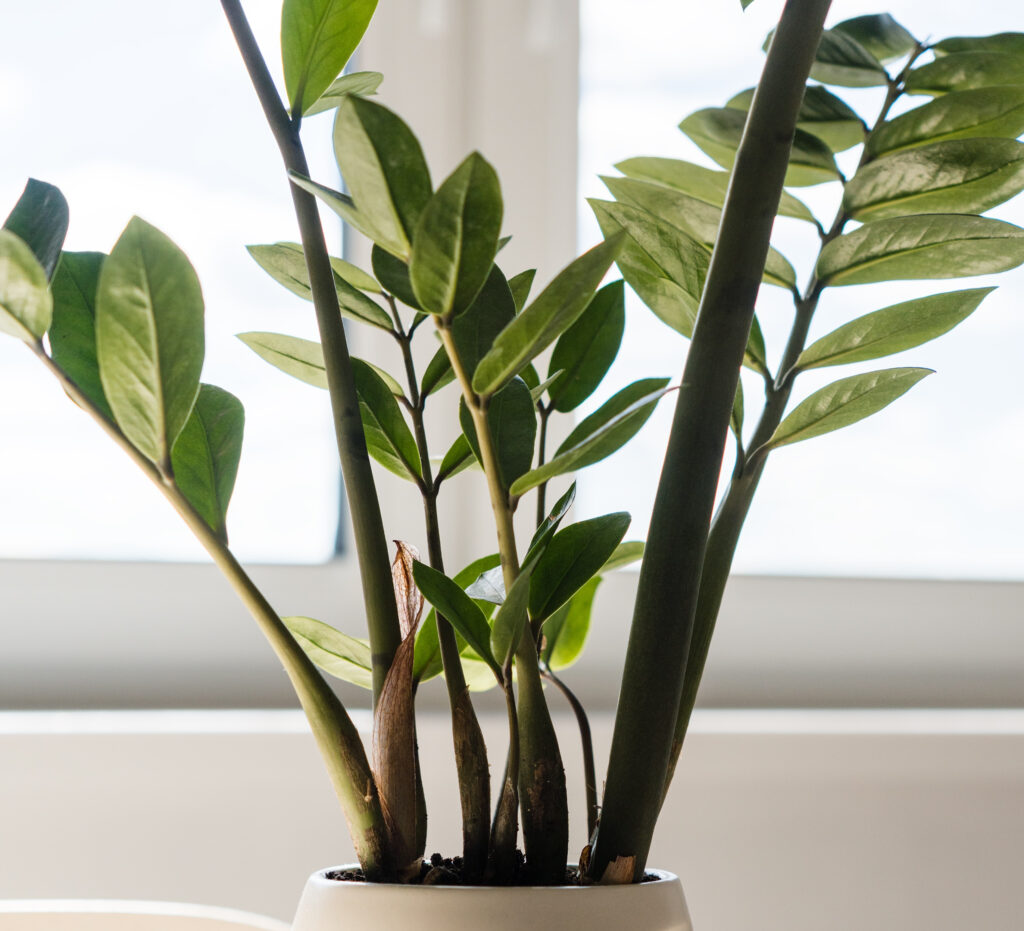
When it comes to houseplants, there are a plethora of options that share similarities with Sansevieria laurentii in terms of their care requirements and appearance. Let’s take a look at a few examples:
1. Dracaena marginata is a plant with long, slender leaves that are accentuated with a bold red or pink edge. It thrives in bright, indirect light and should be watered only when the top inch of soil feels dry.
2. The ZZ plant (Zamioculcas zamiifolia) is a stunning plant with glossy, dark green leaves that grow in a rosette shape. It is incredibly tolerant of low light and infrequent watering, making it an ideal choice for those new to plant care.
3. Pothos (Epipremnum aureum) is a trailing plant with heart-shaped leaves that are variegated with a delightful blend of green and yellow. It can flourish in a variety of light conditions and should be watered when the top inch of soil feels dry.
4. The Peace Lily (Spathiphyllum) is a plant with dark green leaves and produces white flowers that bear a striking resemblance to calla lilies. It thrives in bright, indirect light and should be watered only when the top inch of soil feels dry.
Wrapping up
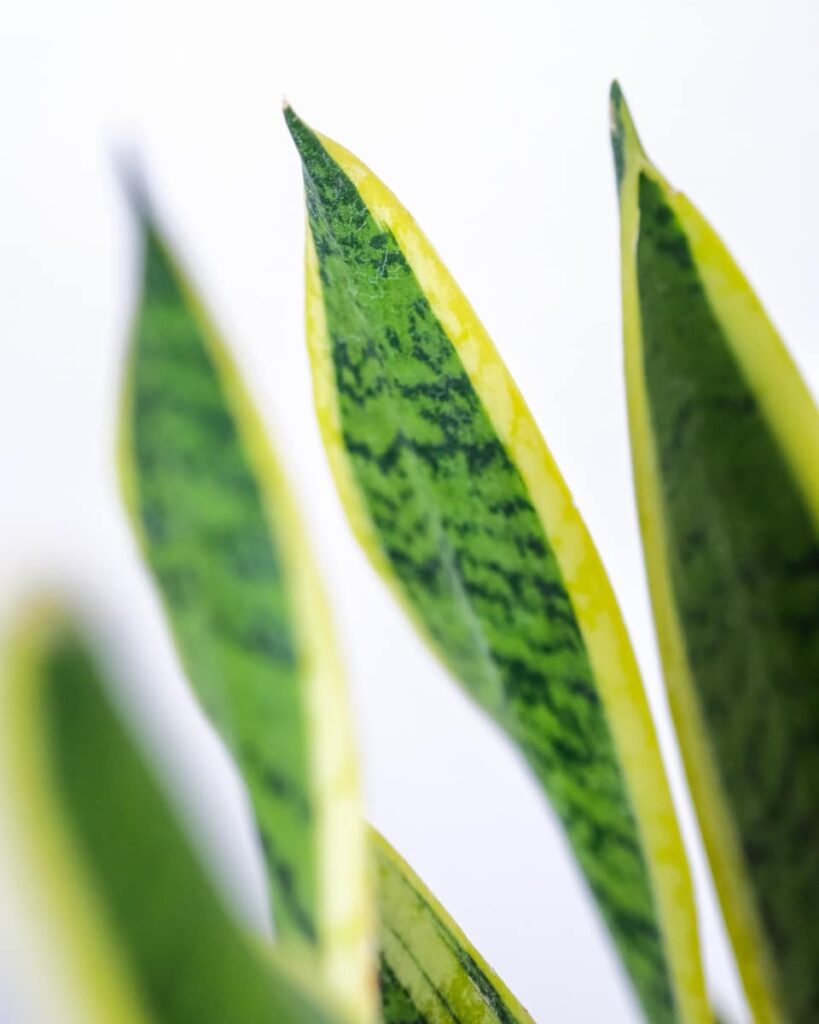
Sansevieria laurentii is a plant that is low-maintenance and perfect for both beginners and experienced gardeners. This snake plant is a great addition to any home or office. Its ability to thrive in a variety of lighting conditions and its striking appearance make it a must-have for plant enthusiasts.
Beyond its easy-going nature, the Sansevieria’s air-purifying qualities are a bonus! By following the simple care tips outlined above, you can enjoy the beauty and benefits of this unique plant for years to come. So why not add a Sansevieria laurentii to your collection today? Trust us, you won’t regret it!
Frequently Asked Questions
How often should I water my Sansevieria laurentii plant?
Sansevieria laurentii plants prefer to be watered sparingly. Water them once every two weeks or when the soil is completely dry.
What kind of soil is best for Sansevieria laurentii plants?
Sansevieria laurentii plants prefer well-draining soil. A mixture of potting soil, sand, and perlite is ideal.
How much sunlight does a Sansevieria laurentii plant need?
Sansevieria laurentii plants can tolerate low to bright indirect sunlight. However, they prefer bright indirect sunlight.
How often should I fertilize my Sansevieria laurentii plant?
Sansevieria laurentii plants do not require frequent fertilization. Fertilize them once every three months with a balanced fertilizer.
How do I propagate my Sansevieria laurentii plant?
Sansevieria laurentii plants can be propagated through division or leaf cuttings. Division is the easiest method.
How do I prevent my Sansevieria laurentii plant from getting root rot?
To prevent root rot, make sure the soil is well-draining and do not overwater the plant. Also, avoid getting water on the leaves.
Can Sansevieria laurentii plants be grown outdoors?
Sansevieria laurentii plants can be grown outdoors in warm climates. They prefer temperatures between 60-85°F.
How do I clean the leaves of my Sansevieria laurentii plant?
Use a damp cloth to gently wipe the leaves of your Sansevieria laurentii plant. Avoid getting water on the leaves.
